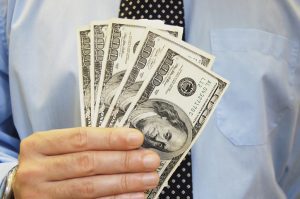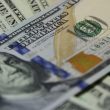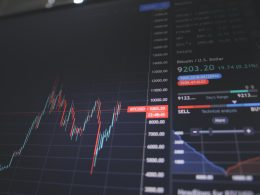Interest rates are a fundamental part of any economy. They influence how much it costs to borrow money, which in turn affects the spending, saving, and investment behaviors of both individuals and businesses. In the United States, rising interest rates have become a central focus as the Federal Reserve has taken steps to control inflation and stabilize the economy. But how exactly do these rising interest rates shape the US economy, and what implications do they hold for everyday Americans and businesses alike?
This article explores the causes of rising interest rates, their impact on various sectors of the economy, and what the future may hold. With easy-to-understand explanations, we will look at how interest rates influence inflation, housing, consumer spending, and investment. Additionally, we’ll compare past rate hikes with the current situation to gain a clearer perspective.
Understanding Rising Interest Rates
Interest rates are controlled by the Federal Reserve, the central banking system in the United States. When the Fed increases interest rates, borrowing costs rise for businesses and consumers, affecting decisions on loans, mortgages, credit cards, and investments. Typically, the Fed raises interest rates to curb inflation when it deems that economic growth is too rapid, potentially leading to higher prices.
Key Drivers Behind Rising Interest Rates:
- Controlling Inflation: High inflation leads to decreased purchasing power, making it more expensive for consumers to buy goods and services. To counter this, the Fed raises interest rates, which slows down consumer and business spending, ideally helping to lower inflation.
- Economic Stability: Rising interest rates can signal a shift toward stability after a period of rapid growth. By making borrowing more costly, the Fed aims to slow down excessive spending and investment, stabilizing the economy.
Understanding these drivers is crucial to comprehending how interest rates influence various parts of the economy.
Impact of Rising Interest Rates on Different Economic Sectors

Rising interest rates have a wide range of effects on the economy, touching everything from consumer spending to the stock market. Here are some of the main areas impacted:
1. Consumer Spending and Debt
Consumer spending, a major component of the US economy, is directly affected by rising interest rates. Higher rates mean higher borrowing costs for credit cards, personal loans, and auto loans, leading to decreased consumer spending. When people are less inclined to borrow money due to higher costs, they may cut back on discretionary spending, slowing economic growth.
2. Housing Market
The housing sector is one of the most sensitive to interest rate fluctuations. Mortgage rates increase as interest rates rise, making home loans more expensive. This reduces affordability for potential homebuyers, leading to a slowdown in housing sales and a decrease in home prices. Rising rates also impact homeowners with adjustable-rate mortgages, as their monthly payments increase, potentially straining household budgets.
3. Business Investments
Higher interest rates mean higher costs for businesses looking to finance expansions or capital investments through loans. Companies may delay or reduce investment plans, leading to slowed growth and potential job cuts. Small businesses are especially vulnerable, as they often rely more on borrowing. Reduced business investment can have a ripple effect, impacting suppliers, contractors, and employees, and overall economic productivity.
4. Stock Market and Investments
Stock markets tend to react negatively to rising interest rates. Higher rates reduce corporate profits as borrowing costs increase, which can lead to lower stock prices. Additionally, as interest rates rise, bonds and other fixed-income investments become more attractive relative to stocks, causing a shift in investment patterns. Investors may seek safer, higher-yield bonds rather than riskier stocks, potentially dampening stock market performance.
5. Inflation Control and Purchasing Power
A primary reason for raising interest rates is to control inflation, which erodes purchasing power. When inflation is high, everyday items become more expensive, leading to reduced consumer demand. By raising interest rates, the Fed aims to cool down spending and, in turn, lower inflation. This can eventually help stabilize prices, although the effect may take time to fully materialize.
Analysis of the Current Impact of Rising Interest Rates
To fully understand the effects of rising interest rates, it helps to examine recent data. Below is an analysis table outlining the specific impacts on major economic sectors.
| Economic Sector | Impact of Rising Interest Rates |
|---|---|
| Consumer Spending | Higher costs for credit cards and loans reduce spending on non-essential items, slowing economic growth. |
| Housing Market | Increased mortgage rates lower housing demand, reduce home sales, and slow down price growth. |
| Business Investment | Costlier financing leads to reduced investment in new projects, expansion, and hiring, potentially limiting growth. |
| Stock Market | Stocks become less attractive as borrowing costs rise, leading to potential declines in stock prices. |
| Inflation | Helps control inflation by discouraging spending and borrowing, ideally stabilizing prices over time. |
Comparative Analysis of Rising Interest Rates: Past vs. Present
It’s useful to compare the current rise in interest rates to similar periods in the past. This comparative analysis can offer insights into how today’s rate hikes might shape the future of the economy.
| Aspect | Past Rate Hikes (e.g., 1980s) | Current Rate Hikes (2020s) |
|---|---|---|
| Reason for Increase | To combat stagflation, with both high inflation and high unemployment | Primarily to curb inflation after pandemic-era stimulus and supply chain issues |
| Effect on Inflation | Successfully reduced inflation but caused a recession due to high borrowing costs | Aims to reduce inflation; the full effect remains uncertain |
| Impact on Housing | Housing market suffered as mortgage rates soared | Similar trends seen today with reduced affordability and declining home sales |
| Consumer Spending | Spending slowed significantly due to higher interest rates | Similar impact observed, with cautious spending especially on credit-based items |
| Business Investment | Many businesses faced challenges due to expensive borrowing costs | Businesses currently delay expansions, especially in uncertain economic climates |
The Future Outlook: What to Expect with Rising Interest Rates
As the US navigates through this period of high interest rates, there are a few key outcomes that experts predict. While the Fed’s goal is to control inflation, the impact on consumer spending, business investment, and the housing market may be prolonged. Here are some possible future scenarios:
- Gradual Inflation Reduction: If the Fed continues with rate hikes, inflation may gradually decline, stabilizing prices but potentially slowing economic growth.
- Stronger US Dollar: Higher interest rates can strengthen the dollar, making US exports more expensive but attracting foreign investment in US bonds.
- Long-term Impacts on Housing: The housing market may face a prolonged period of lower demand, affecting not only home sales but also industries tied to housing, like construction and real estate services.
- Uncertain Business Growth: As businesses remain cautious, the growth rate for industries dependent on loans and capital investments may stay subdued, affecting job creation.
Conclusion
Rising interest rates have a significant and far-reaching impact on the US economy. From the housing market to the stock market, and from consumer spending to business investment, the ripple effects of higher rates touch almost every sector. While the goal is to control inflation and ensure long-term stability, there are challenges and potential sacrifices, especially for individuals and businesses that rely on credit.
The Fed’s actions today shape not only the current economy but also the future landscape of American financial and economic health. For consumers and businesses alike, understanding these impacts can help make more informed financial decisions in a challenging and changing economic environment.












